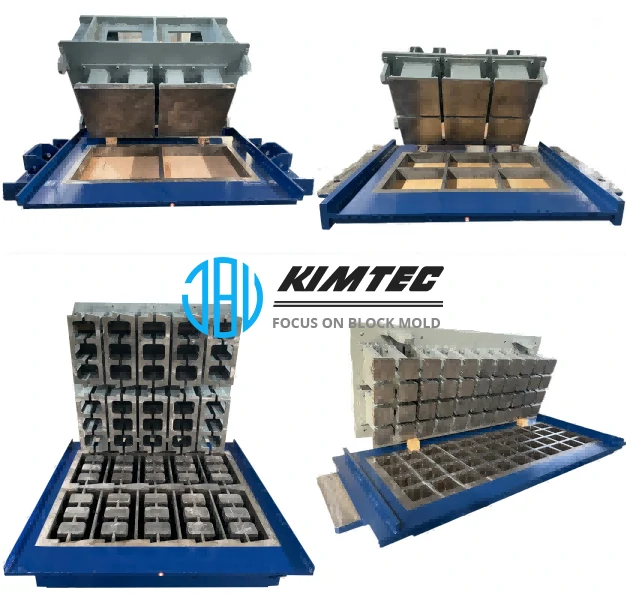What Is a Clay Machine Used For?
October 17, 2024
KBL Machine is proud to announce the launch of its latest line of clay brick making machines, designed to enhance efficiency and quality in brick production. As a leading manufacturer in the clay machine industry, KBL is dedicated to providing innovative solutions that meet the growing demands of the construction market.
A clay machine serves as a vital component in the manufacturing of various clay-based products. Its primary functions include:
1.Processing Raw Clay: Prepares clay by mixing, grinding, and conditioning it for further shaping.
2.Molding Bricks: Shapes the processed clay into bricks, tiles, and other products through various methods.
3.Drying and Firing: Cures the formed products in kilns to achieve the desired strength and durability.
KBL’s machines streamline the entire manufacturing process, ensuring high-quality output while significantly reducing labor costs and production time.

Key Components for Optimal Performance
KBL’s clay brick making machines feature essential components designed for maximum efficiency and durability. These include:
1.Clay Mixer: Ensures consistent clay consistency by thoroughly mixing raw materials with water and additives.
2.Extruder: Shapes the mixed clay into a continuous strip for easy cutting.
3.Cutter: Accurately cuts the extruded clay into standard brick sizes.
4.Molding Unit: Uses compression or vacuum methods to form high-quality bricks.
5.Drying Chamber: Prepares the bricks for firing by effectively removing excess moisture.
6.Kiln: Cures the bricks by subjecting them to high temperatures, enhancing their strength.
7.Control System: Monitors and adjusts the machine’s operation to optimize performance.
Factors to Consider When Selecting a Clay Brick Machine
When selecting clay bricks machine for your manufacturing facility, several key factors should be carefully evaluated to ensure optimal performance and efficiency.
Production capacity is crucial; determine your daily or monthly output requirements to choose a machine that can meet your needs while allowing for future growth. Additionally, consider the type of clay you will be using, as different machines are designed for various clay compositions, ensuring compatibility with your materials.
The automation level is another important aspect. You can choose between manual, semi-automatic, and fully automatic machines based on labor availability and desired efficiency. Fully automatic machines typically offer higher efficiency but require a more significant initial investment.
Moreover, assess the space requirements in your facility to ensure the machine fits comfortably without causing congestion. Keep your budget in mind as well; evaluate both the purchase cost and long-term operational expenses to ensure the investment is feasible.
Further, look for machines that offer durability and build quality to withstand continuous operation, thereby reducing the need for frequent repairs. It’s also beneficial to consider the manufacturer’s reputation for support and service, including warranty options, maintenance support, and spare parts availability.
Lastly, consider factors like energy efficiency, technological features, and regulatory compliance. An energy-efficient machine can lead to cost savings and contribute to sustainability, while advanced features can enhance operational efficiency. Ensuring that the machine complies with local regulations regarding emissions and environmental standards is essential, especially in regions with strict laws.
Advantages
KBL’s clay machines offer numerous advantages that make them a top choice for manufacturers in the industry. One of the most significant benefits is efficiency. By automating the brick-making process, these machines significantly reduce labor costs and production time, allowing manufacturers to increase output without sacrificing quality.
In addition to efficiency, KBL machines ensure consistency in production. They are designed to produce uniform bricks with precise dimensions and superior quality, which is crucial for meeting industry standards and customer expectations.
The scalability of KBL’s machines further enhances their appeal. Whether for small-scale operations or large-scale production, these machines can easily adapt to various manufacturing needs, ensuring that businesses can grow without the need for constant reinvestment in new equipment.
Versatility is another hallmark of KBL machines. They are capable of producing different types of bricks and clay products, allowing manufacturers to respond effectively to diverse market demands and expand their product offerings.
Lastly, KBL machines are highly cost-effective. By minimizing raw material waste and reducing energy consumption, these machines contribute to long-term savings for manufacturers, enhancing their overall profitability.
Maintenance practices
1.Regular Cleaning: Maintain cleanliness by regularly removing clay residues, dust, and debris from the machine to prevent clogs and ensure smooth operation.
2.Lubrication: Apply appropriate lubricants to moving parts as per the manufacturer’s recommendations. Regular lubrication reduces friction and wear, extending the machine’s lifespan.
3.Inspection and Monitoring: Conduct routine inspections to identify any signs of wear and tear. Monitoring critical components, such as motors and belts, can help prevent unexpected breakdowns.
4.Calibration: Periodically calibrate the machine to ensure it is producing bricks of the correct size and shape. This helps maintain quality and consistency in production.
About KBL Machine
KBL Machine is committed to delivering cutting-edge technology and exceptional customer service in the clay brick manufacturing sector. With a focus on innovation and quality, KBL continues to empower brick manufacturers around the globe, ensuring they can meet the demands of modern construction.


